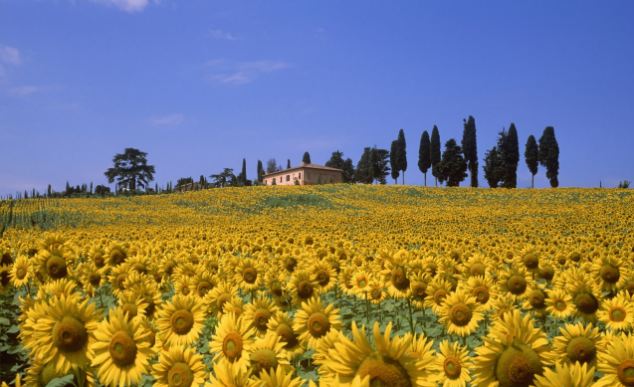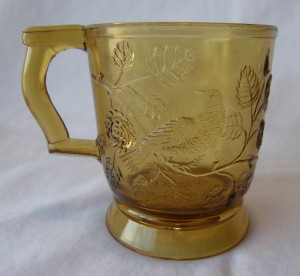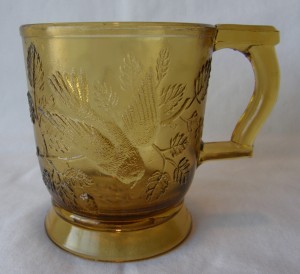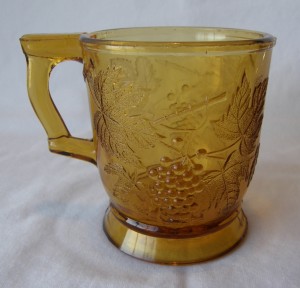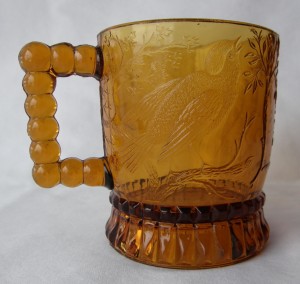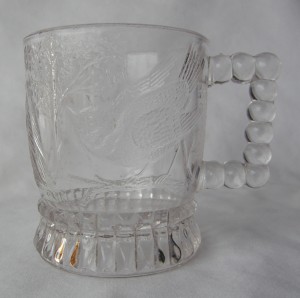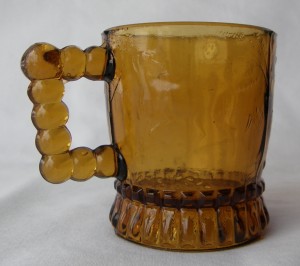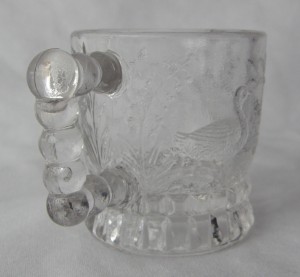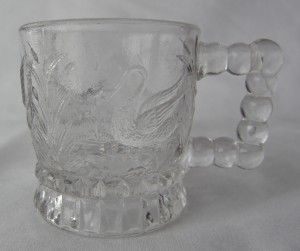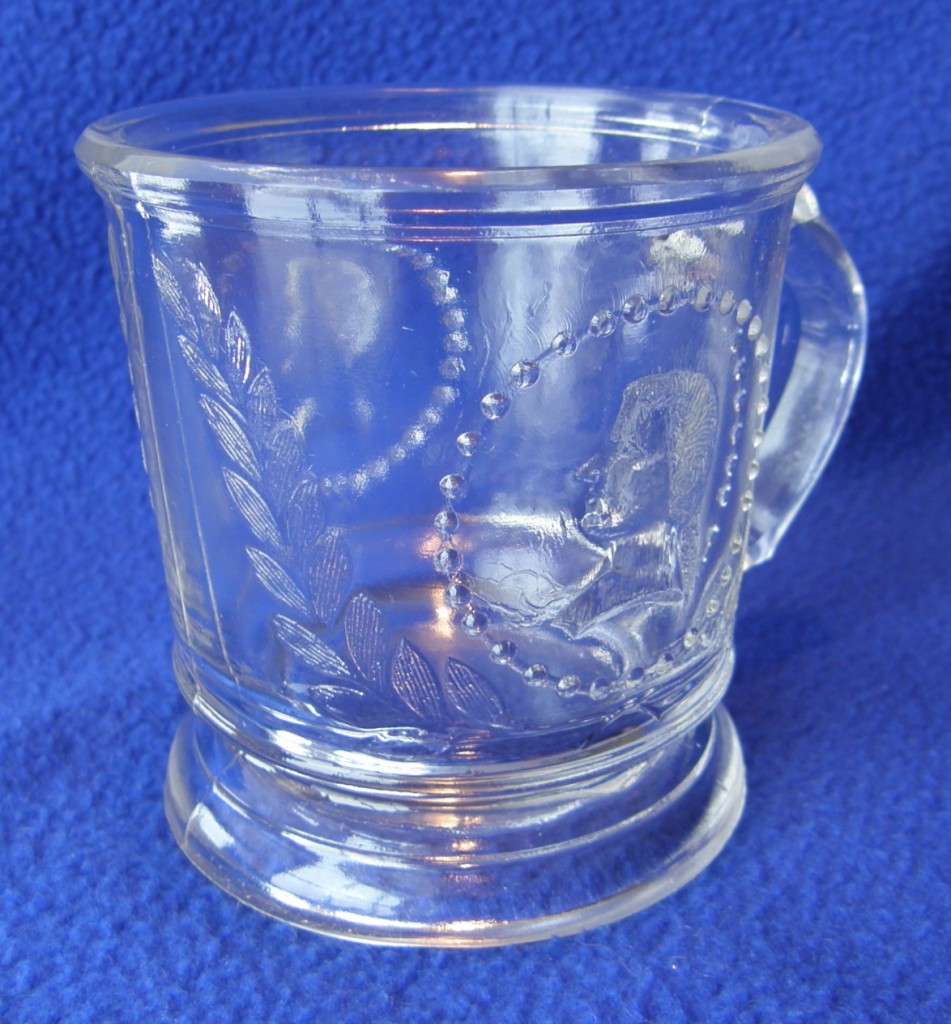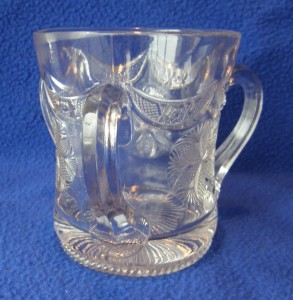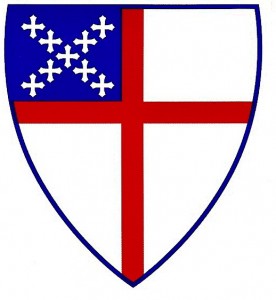On Sunday, February 12, 2012, the reading from the Hebrew Scriptures for Christian churches which use the Revised Common Lectionary (the Episcopal Church being one of them) was the story of Naaman, a general from the country of Aram (modern day Syria). Naaman is a leper who comes to Israel and is cured when, following instructions of Elisha the prophet, he bathes in the River Jordan. Here is how the story is related in the first half of the fifth chapter of the Second Book of Kings:
Naaman, commander of the army of the king of Aram, was a great man and in high favor with his master, because by him the LORD had given victory to Aram. The man, though a mighty warrior, suffered from leprosy. Now the Arameans on one of their raids had taken a young girl captive from the land of Israel, and she served Naaman’s wife. She said to her mistress, “If only my lord were with the prophet who is in Samaria! He would cure him of his leprosy.” So Naaman went in and told his lord just what the girl from the land of Israel had said. And the king of Aram said, “Go then, and I will send along a letter to the king of Israel.”
He went, taking with him ten talents of silver, six thousand shekels of gold, and ten sets of garments. He brought the letter to the king of Israel, which read, “When this letter reaches you, know that I have sent to you my servant Naaman, that you may cure him of his leprosy.” When the king of Israel read the letter, he tore his clothes and said, “Am I God, to give death or life, that this man sends word to me to cure a man of his leprosy? Just look and see how he is trying to pick a quarrel with me.”
But when Elisha the man of God heard that the king of Israel had torn his clothes, he sent a message to the king, “Why have you torn your clothes? Let him come to me, that he may learn that there is a prophet in Israel.” So Naaman came with his horses and chariots, and halted at the entrance of Elisha’s house. Elisha sent a messenger to him, saying, “Go, wash in the Jordan seven times, and your flesh shall be restored and you shall be clean.” But Naaman became angry and went away, saying, “I thought that for me he would surely come out, and stand and call on the name of the LORD his God, and would wave his hand over the spot, and cure the leprosy! Are not Abana and Pharpar, the rivers of Damascus, better than all the waters of Israel? Could I not wash in them, and be clean?” He turned and went away in a rage. But his servants approached and said to him, “Father, if the prophet had commanded you to do something difficult, would you not have done it? How much more, when all he said to you was, `Wash, and be clean’?” So he went down and immersed himself seven times in the Jordan, according to the word of the man of God; his flesh was restored like the flesh of a young boy, and he was clean. (2 Kings 5:1-14 [NRSV])
That’s where the RCL leaves the story, with Naaman cleansed by the mighty power of God. Great story! Wonderful story! A miracle healing that proves the power of God. It fits well with the gospel lesson appointed for the day from Mark’s Gospel:
A leper came to Jesus begging him, and kneeling he said to him, “If you choose, you can make me clean.” Moved with pity, Jesus stretched out his hand and touched him, and said to him, “I do choose. Be made clean!” Immediately the leprosy left him, and he was made clean. After sternly warning him he sent him away at once, saying to him, “See that you say nothing to anyone; but go, show yourself to the priest, and offer for your cleansing what Moses commanded, as a testimony to them.” But he went out and began to proclaim it freely, and to spread the word, so that Jesus could no longer go into a town openly, but stayed out in the country; and people came to him from every quarter. (Mark 1:40-45 [NRSV])
Another wonderful story of the healing power of God.
But … I’m troubled by the fact that the reading from the Hebrew Scriptures ends where it does. As the story continues in the rest of 2 Kings 5, we find that Naaman, inspired by his healing, has become a follower of Yahweh. Here’s the rest of Naaman’s interaction with Elisha in 2 Kings 5:
Then he returned to the man of God, he and all his company; he came and stood before him and said, “Now I know that there is no God in all the earth except in Israel; please accept a present from your servant.” But he said, “As the Lord lives, whom I serve, I will accept nothing!” He urged him to accept, but he refused. Then Naaman said, “If not, please let two mule-loads of earth be given to your servant; for your servant will no longer offer burnt offering or sacrifice to any god except the Lord. But may the Lord pardon your servant on one count: when my master goes into the house of Rimmon to worship there, leaning on my arm, and I bow down in the house of Rimmon, when I do bow down in the house of Rimmon, may the Lord pardon your servant on this one count.” He said to him, “Go in peace.” (2 Kings 5:15-19a [NRSV])
Naaman is presented with the moral and religious dilemma of doing something his king will demand (joining him in worship of Rimmon) which he knows is abhorrent to his new allegiance, Yahweh. He basically asks Elisha if God will forgive this, to which Elisha merely responds, “Go in peace.” I assume that means not to worry, that Yahweh is a forgiving god and will not find fault in Naaman, but one must admit that it is ambiguous. This is a dilemma that we face on a daily basis – demands of employers, schools, sports teams, friends, governments, family, etc. which are at odds with the dictates of religion. – The reading as it stands leaves us with Naaman fully cleansed by God, but the rest of the fifth chapter of 2 Kings leaves us with a very different Naaman, a Naaman troubled by the conflict between the requirements of faith and the demands of the world.
Now what I find fascinating is not the first similarity between Naaman and the unnamed leper in Mark’s story, i.e., that they are cured, but rather the second similarity, that they are both confronted with religious proscriptions! Naaman somehow knows that he is not to worship other gods; someone somewhere at sometime has told him of Yahweh’s first commandment to his people, “I am the Lord your God, who brought you out of the land of Egypt, out of the house of slavery; you shall have no other gods before me. You shall not make for yourself an idol, whether in the form of anything that is in heaven above, or that is on the earth beneath, or that is in the water under the earth. You shall not bow down to them or worship them.” (Exodus 20:2-5a [NRSV]) Naaman knows that his king will demand that he do something which will violate this command and he wants to be assured that in breaking it he will not be punished (perhaps by loss of his cure?). The leper in the gospel story also knows of a command; he’s given one point-blank by Jesus, “See that you say nothing to anyone…” (Mark 1:44 [NRSV]) But he goes right out and breaks it! “He went out and began to proclaim it freely, and to spread the word, so that Jesus could no longer go into a town openly, but stayed out in the country; and people came to him from every quarter.” (Mark 1:45)
Two responses to religious proscription. What are we to make of these? How are we to form some sort of understanding of our response to the demands of faith, the demands of religion when scripture gives us two such widely varying examples … and, in truth, there are three. We’ve not yet finished the fifth chapter of the Second Book of Kings, for the story of Elisha and Naaman is not finished until Elisha’s servant Gehazi is dealt with. What an interesting contrast there is between the servants of Naaman, who are not followers of Yahweh, and Gehazi, who allegedly is!
The chapter concludes with this vignette:
But when Naaman had gone from him a short distance, Gehazi, the servant of Elisha the man of God, thought, “My master has let that Aramean Naaman off too lightly by not accepting from him what he offered. As the Lord lives, I will run after him and get something out of him.” So Gehazi went after Naaman. When Naaman saw someone running after him, he jumped down from the chariot to meet him and said, “Is everything all right?” He replied, “Yes, but my master has sent me to say, ‘Two members of a company of prophets have just come to me from the hill country of Ephraim; please give them a talent of silver and two changes of clothing.'” Naaman said, “Please accept two talents.” He urged him, and tied up two talents of silver in two bags, with two changes of clothing, and gave them to two of his servants, who carried them in front of Gehazi. When he came to the citadel, he took the bags from them, and stored them inside; he dismissed the men, and they left. He went in and stood before his master; and Elisha said to him, “Where have you been, Gehazi?” He answered, “Your servant has not gone anywhere at all.” But he said to him, “Did I not go with you in spirit when someone left his chariot to meet you? Is this a time to accept money and to accept clothing, olive orchards and vineyards, sheep and oxen, and male and female slaves? Therefore the leprosy of Naaman shall cling to you, and to your descendants forever.” So he left his presence leprous, as white as snow. (2 Kings 19b-27 [NRSV])
So we have three responses to the demands of religion when set at odds with the demands of the world:
- Naaman’s response which is to seek forgiveness (even before being placed in the position of disobeying the religious command);
- The leper’s response which is to freely and openly disobey the command (here in obedience to a perhaps over-riding sense of duty to spread the Good News);
- Gehazi’s response to furtively disobey (and then lie when caught).
So what are we to do? What are we to make of these? How are we to form some sort of understanding of how we are to make religious decisions, ethical decisions when scripture gives us such widely varying examples? Well, clearly, we are not to do what Gehazi the servant did, but that still leaves us with little guidance.
The truth is that Scripture is not a rule book and does not give us clear guidance; we have to use our minds or, as our Anglican theological convention would put it, we have to turn to tradition (the discernment of the church throughout the ages) and reason (our own rational faculties informed by experience and inspired by the guidance of the Holy Spirit).
A framework for ethical or religious decision-making might include these steps. First, recognize whether it is an ethical issue: Is it a situation in which your decision could be damaging to some individual (including yourself) or to some group? Is it a decision which involves a choice between a good and bad alternative, or between two goods or maybe even between two bads? Is it an issue about more than what is legal or what is most efficient? Is it a question about balancing the demands of religion against the demands of the world?
Second, get the facts. What are the relevant facts of the case? What do you not known? Is there more to learn about the situation? Do you know enough to make a decision? What individuals and groups have an important stake in the outcome? Should they be consulted? Are some concerns more important? Why? What are your options for action? Have you identified creative options?
The third step is to evaluate your options by considering them in light of one or more of the following questions which represent the five different philosophical approaches to ethical decision-making:
- The utilitarian approach asks which the outcome will provide the most good or do the least harm, or, to put it differently, which option will produces the greatest balance of good over harm.
- According to a second approach, the most ethical action is the one that best protects the moral rights of those affected, so the question to ask is, “Which option best respects the rights of all who have a stake?”
- The third approach, based on the philosophy of Aristotle and other Greek, argues that all equals should be treated equally, or at least fairly based on some defensible standard. So the evaluative question is, “Which action will treat those involved equally or proportionately?”
- Greek philosophers also contrived the notion that life in community is a good unto itself and our actions should contribute to that life, so the “common good” approach asks which option would best serve the community as a whole, not just some of its members?
- The fifth method of making an ethical or religious decision has been called “the virtue approach”. According to this approach, the ethical decision is the one which will accomplish the highest potential of our character and accord with the classic virtues: truth, beauty, honesty, courage, compassion, generosity, tolerance, love, fidelity, integrity, fairness, self-control, and prudence. The evaluative question is, “Which option leads me to act as the sort of person I want to be?”
It is this fifth method of making a decision that most accords with our faith. But Christian morality is more than a commitment to some general, universal good, and it is about more than making decisions. The virtues are God-given qualities which we learn in the community of faith; they are the fruits of the Spirit given to the church. These virtues do not come about simply by making right decisions. They are learned skills developed in the process of character formation, in the process of learning to live in accordance with God’s will. It is the cultivation and exercise of these virtues within the community of faith that makes one a moral person; it is more than mere decision-making.
To be a follower of Yahweh and, specifically for us, to be a Christian is not principally about making ethical decisions; it is not about deciding to obey certain commandments or rules. It is about becoming a disciple, someone for whom the center of creation is the Creator. Our decisions will then reflect who we really are. The basic moral or ethical question for a follower of Yahweh, for a Christian is not, “What am I to do?” but “Who am I to be?” It is what theologian and ethicist Stanley Hauerwas calls “narrative ethics” as opposed to “decisionist ethics”. It is, he says, about entering into God’s story. As another theologian has said, it is about giving up being the star of one’s life’s story and allowing God to take center stage. God has invited us into God’s story, but God is always the star of that story. By learning to be his disciples, by finding our life in God’s narrative, we find our way into the moral life; we find that the decisions become less important because doing the right thing simply becomes a natural thing, part of the narrative. This is why Jesus, when challenged about the priority of the commandments, was able to say that there are only two important ones: Love God and love your neighbor. Enter into this narrative of love and everything else falls into place.
Deciding and doing are important, but the first ethic question for a follower of Yahweh is not “What ought we to do?” It is “What ought we to be?” And this brings us back to the two lepers in today’s lessons. The leper whom Jesus healed acted on the wrong question. Instead of entering into Jesus’ story and carrying forward the narrative Jesus was living out, he decided to do what called attention to himself, to remain the star of his story, to tell his own self-centered narrative of healing and, as a result, “Jesus could no longer go into a town openly.”
Naaman, on the other hand, entered into the story of the God of Israel and, becoming part of that story, recognized his need to conform to it. He moved from a self-centered narrative of which he was the star and entered into God’s narrative, the story which would create in him the character God would call him to be, and so the prophet bids him, “Go in peace.”
Stories of miracle cures are wonderful! They prove the mighty power of God. But the last half of the fifth chapter of 2 Kings is much more challenging than the first and much more instructive as we struggle to live into our parts in God’s story!

